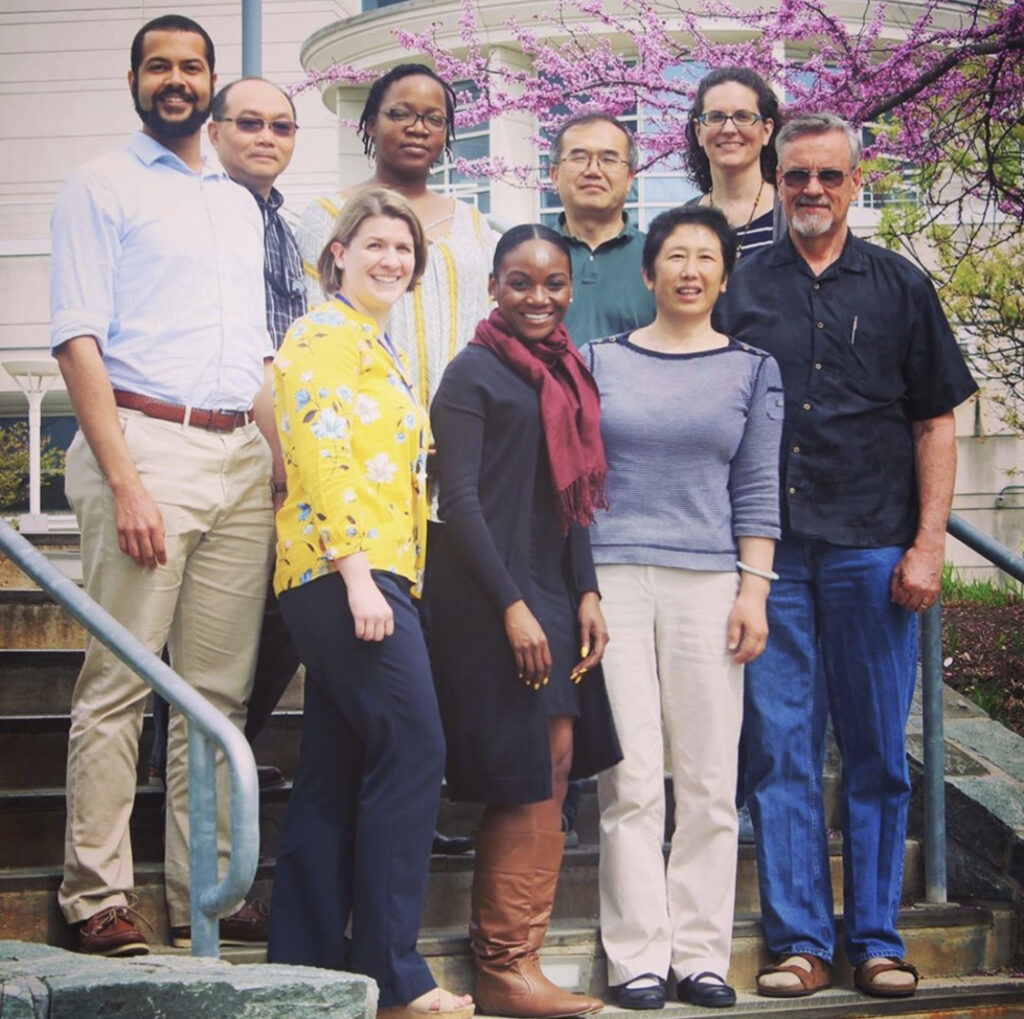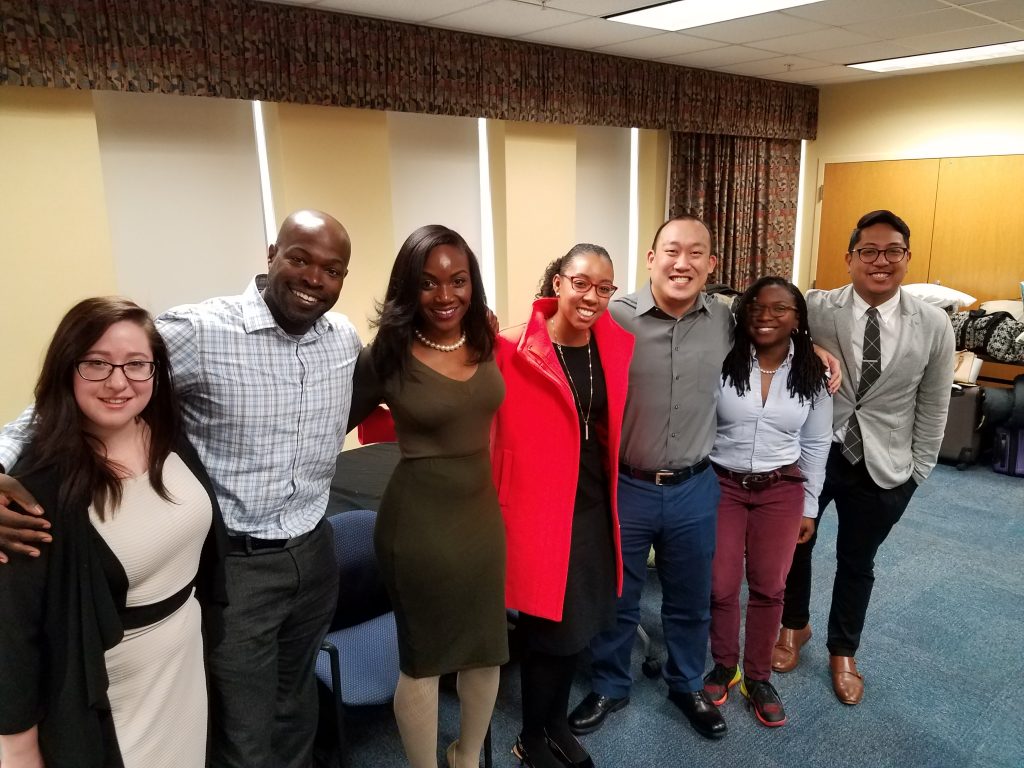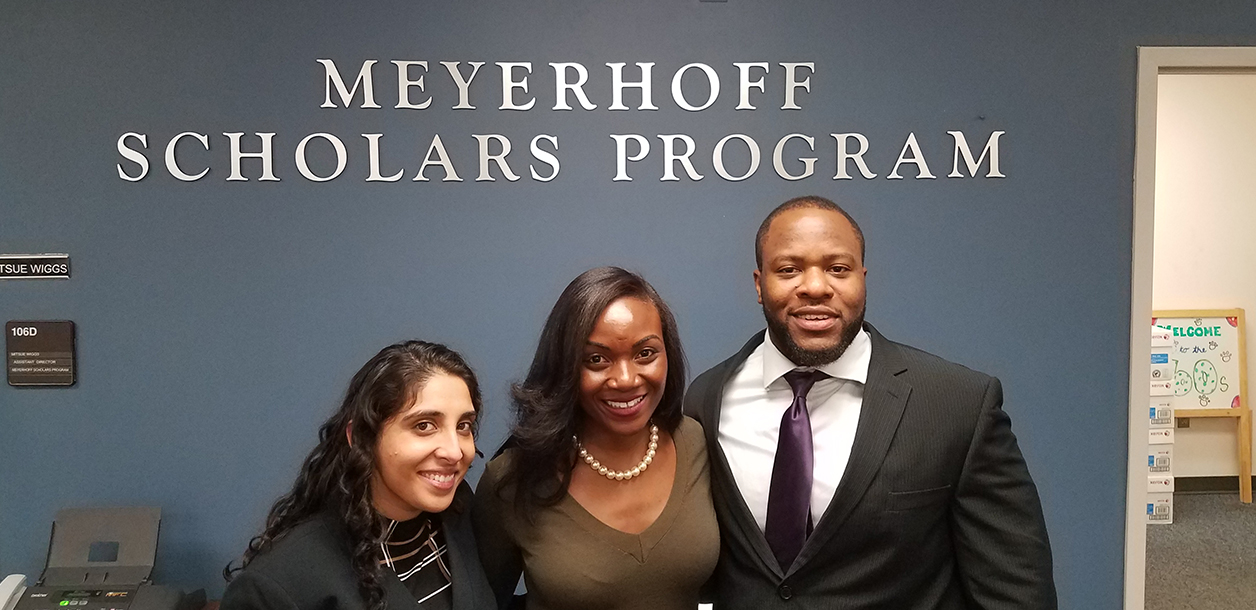Clinical trials seeking a vaccine to prevent COVID-19 are galloping forward around the world, and Kizzmekia Corbett and Barney Graham’s research team at the National Institute of Allergy and Infectious Diseases (NIAID) continues to lead the pack.
In a study of non-human primates published in the prestigious New England Journal of Medicine last week, the team became the first to demonstrate that their vaccine successfully stopped viral replication in both the lungs and nose. The findings were a significant advance compared to previous studies, which only showed protection in the lungs. The day after Corbett’s results were published, Johnson & Johnson published similar results for their vaccine, although the animals in the Johnson & Johnson trial were exposed to a lower amount of the virus.
“Protection in the upper airway is something that’s hard to come by, so it’s a big deal,” says Corbett ’08, M16, biological sciences and sociology, scientific lead for the Coronavirus Vaccines Team at the NIAID Vaccine Research Center. “We were very excited when we saw it.”
Next steps
The next step is a phase III human trial, which began with 30,000 participants on July 27. The participants will either receive the vaccine or a placebo, “and then they will go live their lives, and either be exposed to the coronavirus or not,” Corbett says. Over time, enough of the participants will be exposed so that researchers can measure the efficacy of the vaccine.
Biotech company Moderna is orchestrating the human trial using data generated by Corbett’s team. Many people are laser-focused on the human trials, which are necessary to determine whether the vaccine is safe and effective at protecting people from the coronavirus that causes COVID-19. However, Corbett says, “There are still important questions we can answer with animal models.”
For example, they can measure different immune responses, like the presence of antibodies or different kinds of immune cells, when animals receive different doses of the vaccine. They can also measure how long those responses last.
“We were adamant about testing sub-protective doses,” Corbett says. Testing doses below the level necessary for full protection might seem counterintuitive. However, looking at the immune responses and outcomes in animals that contract the disease at different doses can provide useful information. Scientists can look at the results to figure out which kinds of immune responses are necessary for complete protection, and how strong those responses must be. “You can’t really comprehensively understand the immunity if you don’t test wide dose ranges,” Corbett explains.
The new normal
Many of these additional studies are happening now, some in Corbett’s lab at NIAID. Although at one point it felt like their lives might go back to normal after the phase III trial began, it’s become clear to Corbett that “normal” is still a year or two away. “This work is never going to be over for us,” she says. “We’re still extremely busy, and everyone’s working extremely hard.”

Between meetings to organize the team, interpreting data, writing papers and grants, working in the lab, and more, Corbett is consistently putting in 10-plus-hour days, six days a week—and having one day of rest is only a recent development. Even on a Sunday, the day we spoke, she said two or three of her teammates were working in the lab.
“There is such a necessity to see at least one vaccine through, that I would just feel like I didn’t do my part if I gave up, or burned out, or got too tired. So the necessity, the need for a vaccine now, is keeping me going.”
So much to know
Although COVID-19 is driving the rapid progress and increase in funding for this kind of research, for Corbett her work is about much more than the current pandemic. “It’s not just about mRNA 1273,” the name of the critical molecule in her team’s vaccine. “It’s about understanding what protective immunity looks like for coronaviruses,” she says. “This large, broad pipeline of vaccines for coronavirus really is going to inform future coronavirus vaccine development.”
The pandemic has created much greater visibility for her team, which includes Olubukola Abiona ’17, M25, biochemistry and molecular biology. That’s been a boon for all of their work. In addition to the global need for a vaccine, “I’m motivated by the unknown. There’s just so much to know,” Corbett says. “And now, a lot of the questions that we’ve always wanted to answer, we can.”

*****
Header image: Corbett with Meyerhoff alumni Akanksha Lewis ’10, M17, chemical engineering, (left) and Nnamdi Osia ’09, M17, computer engineering, (right) following Meyerhoff Scholars Program selection interviews in 2017. Photo courtesy of Keith Harmon, director, Meyerhoff Scholars Program.
Tags: Biology, Chemistry, CNMS, COVIDresearch, meyerhoff, MeyerhoffScholars, mhoff, Resilience



